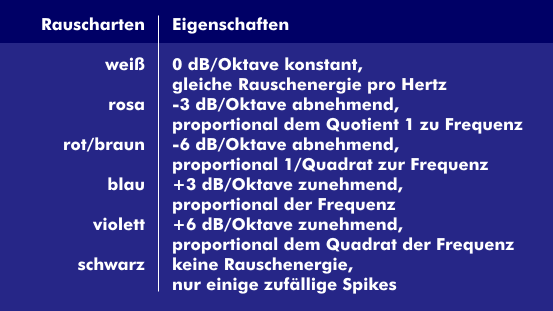red noise
In the case of noise, the color assignments such as Pink Noise or Blue Noise have to do with the frequency behavior of the noise. If the energy density of Pink Noise decreases inversely proportional with frequency, that of Red Noise decreases inversely proportional with the square of the frequency. For pink noise it is 1/f and for red noise it is `1/f^2`, which is why it is also called `1/f^2` noise.
The mathematical function expresses itself in a much stronger energy density drop of -6 dB/ octave, in contrast to -3 dB/octave for Red Noise and +6 dB for Violet Noise.
In red noise, also known as brown noise, lower frequencies have a disproportionately higher energy density than higher frequencies. The difference from octave to octave is 6 decibels (dB). Since a higher octave has twice the frequency range as a lower octave, the noise density for the next higher octave is reduced by -3 dB compared to the one below it.
For example, if the octave between 1 kHz and 2 kHz has a noise density of 0 dB, then the octave above it for red noise has one of -3 dB.

